This article consists almost entirely of a plot summary .(August 2024) |
"The Baumoff Explosive", also known as "Eloi, Eloi, Lama Sabachthani" is a horror story by William Hope Hodgson, first published in 1919. [1] [2] [3] [4] [5]
This article consists almost entirely of a plot summary .(August 2024) |
"The Baumoff Explosive", also known as "Eloi, Eloi, Lama Sabachthani" is a horror story by William Hope Hodgson, first published in 1919. [1] [2] [3] [4] [5]
The story is told using a framework or "story within a story", a method used by Hodgson in many of his stories. It is learned in the framework story that a strange new explosive has been developed. Invented by a man named Baumoff, this substance has the effect of creating a temporary area of darkness, into which light does not readily pass.
The main body of the story describes the narrator's meeting with Baumoff, who is described as a scientist who is also profoundly Christian and obsessed with the crucifixion. Baumoff believes that events following Christ's death (the darkening of the sky, the rending of the temple curtain, and shaking of the ground, as described in the gospels) have a rational, scientific basis. This basis is the ability of the human psyche to affect the aether and impede the transmission of light. Baumoff displays a tiny quantity of a chemical compound which, when crushed and burned, creates a region of temporary darkness.
Baumoff then goes on to demonstrate what happens when the substance is "burned" (metabolized) within his own body. While the narrator watches in horror, Baumoff's heart rate and respiration increase dangerously, and he begins driving metal spikes into his hands and feet to simulate the pain of Christ's crucifixion. The narrator begs him to stop his demonstration, but Baumoff insists that the narrator only observe and take careful note. The flickering darkness returns, and the house begins to shake. Baumoff begins to imagine that he is reliving Christ's final hours, which by putting himself in the place of Christ, verges on blasphemy; as he describes what he is imagining, the narrator himself sees a vision of Christ carrying the cross. Baumoff screams some of Christ's last words on the cross, "Eloi, Eloi, Lama Sabachthani?" ("My God, my God, why have you forsaken me?")
As the pain of his self-inflicted torture reaches its maximum, a gasping Baumoff cries out Christ's words again. The cry is repeated a second time, but this time by a mocking, demonic voice. In the darkness, the building shakes, and the narrator is knocked unconscious. When he awakens, he finds Baumoff dead, his face distorted. The rational explanation is heart failure, but the narrator cannot help believing that Baumoff's blasphemy may have invited in a demonic force. We are left to ponder the implications of this strange weapon, wondering if other (willing, or unwitting) "soldiers of Christ" are being readied for torture and death.

Horror is a genre of speculative fiction that is intended to disturb, frighten, or scare. Horror is often divided into the sub-genres of psychological horror and supernatural horror, which are in the realm of speculative fiction. Literary historian J. A. Cuddon, in 1984, defined the horror story as "a piece of fiction in prose of variable length ... which shocks, or even frightens the reader, or perhaps induces a feeling of repulsion or loathing". Horror intends to create an eerie and frightening atmosphere for the reader. Often the central menace of a work of horror fiction can be interpreted as a metaphor for larger fears of a society.

The Time Machine is an 1895 dystopian post-apocalyptic science fiction novella by H. G. Wells about a Victorian scientist known as the Time Traveller who travels approximately 800,806 years into the future. The work is generally credited with the popularization of the concept of time travel by using a vehicle or device to travel purposely and selectively forward or backward through time. The term "time machine", coined by Wells, is now almost universally used to refer to such a vehicle or device.

"The Pit and the Pendulum" is a short story by American writer Edgar Allan Poe and first published in 1842 in the literary annual The Gift: A Christmas and New Year's Present for 1843. The story is about the torments endured by a prisoner of the Spanish Inquisition, though Poe skews historical facts. The narrator of the story describes his experience of being tortured. The story is especially effective at inspiring fear in the reader because of its heavy focus on the senses, such as sound, emphasizing its reality, unlike many of Poe's stories which are aided by the supernatural. The traditional elements established in popular horror tales at the time are followed, but critical reception has been mixed. The tale has been adapted to film several times.

William Hope Hodgson was an English author. He produced a large body of work, consisting of essays, short fiction, and novels, spanning several overlapping genres including horror, fantastic fiction, and science fiction. Hodgson used his experiences at sea to lend authentic detail to his short horror stories, many of which are set on the ocean, including his series of linked tales forming the "Sargasso Sea Stories". His novels, such as The House on the Borderland (1908) and The Night Land (1912), feature more cosmic themes, but several of his novels also focus on horrors associated with the sea. Early in his writing career Hodgson dedicated effort to poetry, although few of his poems were published during his lifetime. He also attracted some notice as a photographer and achieved renown as a bodybuilder. He died in World War I at age 40.
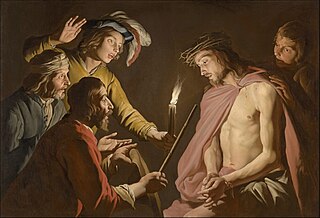
The Passion is the short final period before the death of Jesus, described in the four canonical gospels. It is commemorated in Christianity every year during Holy Week.

"The Tell-Tale Heart" is a short story by American writer Edgar Allan Poe, first published in 1843. It is told by an unnamed narrator who endeavors to convince the reader of the narrator's sanity while simultaneously describing a murder the narrator committed. The victim was an old man with a filmy pale blue "vulture-eye", as the narrator calls it. The narrator emphasizes the careful calculation of the murder, attempting the perfect crime, complete with dismembering the body in the bathtub and hiding it under the floorboards. Ultimately, the narrator's actions result in hearing a thumping sound, which the narrator interprets as the dead man's beating heart.
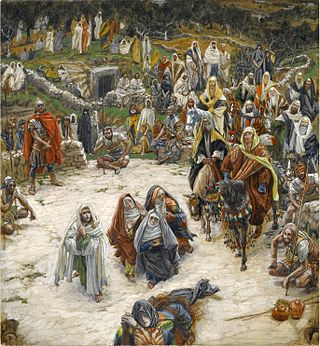
The sayings of Jesus on the cross are seven expressions biblically attributed to Jesus during his crucifixion. Traditionally, the brief sayings have been called "words".
The Space Trilogy is a series of science fiction novels by C. S. Lewis. The trilogy consists of Out of the Silent Planet (1938), Perelandra (1943), and That Hideous Strength (1945). A philologist named Elwin Ransom is the protagonist of the first two novels and an important character in the third.

The Night Land is a horror/fantasy novel by English writer William Hope Hodgson, first published in 1912. As a work of fantasy it belongs to the Dying Earth subgenre. Hodgson also published a much shorter version of the novel, entitled The Dream of X (1912).

"The Nameless City" is a short horror story written by American writer H. P. Lovecraft in January 1921 and first published in the November 1921 issue of the amateur press journal The Wolverine. It is often considered the first story set in the Cthulhu Mythos world. In the story, the protagonist travels to the middle of the Arabian Desert to explore an ancient underground city.
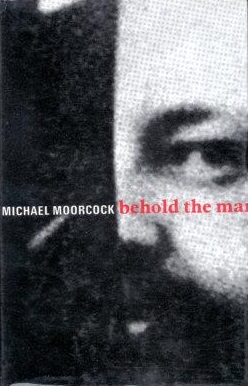
Behold the Man is a existentialist science fiction novel by British writer Michael Moorcock. It originally appeared as a novella in a 1966 issue of New Worlds magazine; later, Moorcock produced an expanded version that was first published in 1969 by Allison & Busby. The title derives from John 19, Verse 5, in the New Testament: "Then Jesus came out, wearing the crown of thorns and the purple robe. And Pilate said to them Behold the Man".

"From Beyond" is a horror genre short story by American writer H. P. Lovecraft. It was written in 1920 and was first published in The Fantasy Fan in June 1934.
The Apostles, Op. 49, is an oratorio for soloists, chorus and orchestra composed by Edward Elgar. It was first performed on 14 October 1903 at the Birmingham Music Festival.

The Boats of the "Glen Carrig" is a horror novel by English writer William Hope Hodgson, first published in 1907. Its importance was recognised in its later revival in paperback by Ballantine Books as the twenty-fifth volume of the celebrated Ballantine Adult Fantasy series in February 1971.
"The Evil Clergyman" is an excerpt from a letter written by American horror fiction writer H. P. Lovecraft in 1933. After his death, it was published in the April 1939 issue of Weird Tales as a short story. The story was later adapted into the unreleased 1987 anthology film Pulse Pounders.
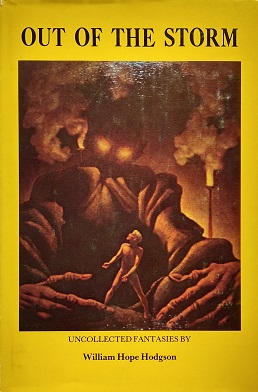
Out of the Storm is a collection of fantasy short stories by William Hope Hodgson. It was first published in 1975 by Donald M. Grant, Publisher, Inc. in an edition of 2,100 copies.
"My God, my God, why hast Thou forsaken me?" is a phrase that appears both in the Old Testament or Hebrew Bible, in the Book of Psalms, as well as in the New Testament of the Christian Bible, as one of the sayings of Jesus on the cross, according to Matthew 27:46 and also Mark 15:34.
"The Man Who Went Too Far" is a short work of supernatural fiction by E. F. Benson, collected in his The Room in the Tower, and Other Stories (1912).
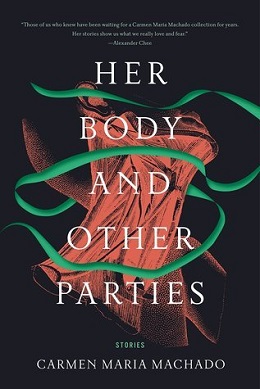
Her Body and Other Parties is a 2017 short story collection by the writer Carmen Maria Machado, published by Graywolf Press. The collection won the Shirley Jackson Award, and was a finalist for the National Book Award for Fiction. The story "The Husband Stitch" was nominated for the Nebula Award for Best Novelette.